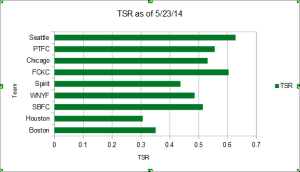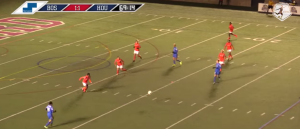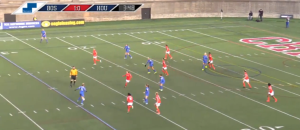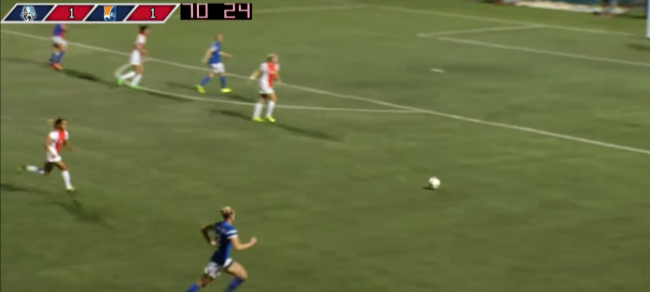Back in May, Kansas City sat in fourth place. They played two to four games more than everyone else. On the surface the team looked like they were in trouble. However their extremely high TSR and extremely PDO made them the best candidate to challenge Seattle. Fast forward and they have finished 2nd in the league and are now traveling to Seattle to try to bring back a championship back to Kansas City. These stats may not predict the future but they are valuable pieces of information.
Stats aren’t perfect, but they are pretty good. Seattle as the most dominant statistical team and deserve to be in the final. And while Kansas City has had some ups and downs, their TSR has been consistently one of the top two or three in the league and also they deserves to be there. The two teams dominate their opponents TSR perspective, Seattle has a TSR of .60 and Kansas City has a TSR of .55. Making them the number one and three TSR in the league. Both teams consistently outshoot their opponent, which is not surprising for those that have watched the two teams play. For example in last week’s play off game, Kansas City outshot Portland 15-5. While there has been a lot of talk about the heat, both teams played in it and Kansas City dominated the number 3 team. Seattle playing in what seemed like a cool night outshot Washington 17-8. Both of these teams dominated not just random teams in the league, but did this in play off games, which only shows how dominant these teams are.
To me, a team’s past PDO isn’t as impactful in a one off game. I think that it indicates future trends and understanding the past body of work by giving context than being helpful in predicting one off games. That being said, Seattle has a crazy high PDO. They’re really optimizing everything because they convert the most shots on target into goals, and prevent the most shots on target from becoming goals. All year, I’ve been wondering how much of this is their system and personnel. For example all year they’ve consistently had the highest save percentage, the easy place to look is that they have Hope Solo who saves 78%. But in 4 games back up goalie Haley Kopmeyer saved also nearly 90% of shots on goal too.
This match up though, is as much about the coaching as it is the players on the field. Both teams to me are successful because of their high press. They are both quick to press the ball. This was exemplified by Megan Rapinoe’s goal for Seattle. Seattle’s shape and organization, is what leads to the turnover and goal.

Not only is Rapinoe pressing the ball 40 yards from goal, (thank you football lines) but Leroux up top and Naho are in position to press the pass while Little is able to block the two central passing lanes with her body. This forces Pressly to take a few extra touches, leading to a turnover and eventual goal.
This team goal, is an example of the coaching from Laura Harvey, turning last year’s third worse defense to the league’s best defense. If one of the players is not in position that Pressly has an easy outlet and nothing happens. On the other side Kansas City head coach, Vlatko Andonovski, showed his tactical acumen by shutting down the admittedly scary Portland defense. Instead of trying to shut down the offensive juggernaut that is Portland’s attack, Andonovski shut down the distribution to the front line. Doing so he was able to shut down Portland and limit them to four shots with only one of them on goal.
Another testament to the coaching is the numbers of fouls committed. Originally I was looking for stats that would prove their both team’s pressing, which would ideally have been tackles. Upon finding that the league doesn’t keep track of that I decided to look at fouls. I thought that with both team’s constant pressing that the number of fouls committed would be high, however these two teams had by far, the least amount of fouls in the league. This comes down, for me two things. First off that both teams have so much of the ball that they don’t have a chance to commit fouls. Combining their high TSRs, which we are substituting for possession stat because it doesn’t exist for NWSL, and the low number of fouls committed by both teams, we see from another perspective how dominant they are. Essentially they don’t have a chance to foul the other team. But even more impressive is that because of how well organized that they aren’t forced to resort to fouling either. Fouls are more likely to be called because the player is taking a chance trying to get the ball or out of position. Look again at the Rapinoe goal. The team is so well organized that none of them are in positions that they will be forced to commit fouls or allow a counter.
When matching up against each other the two teams are fairly even. Seattle won the regular season series, winning the first match up and tying the last 2. Seattle only shot the ball 2 more times than Kansas City (33-31), making the TSR between the two virtual identical of .51 for Seattle and .49 for Kansas City. While both teams are used to outshooting their opponent, here Seattle’s freakishly efficiency and PDO might come in handy as they are able to make more of their limited chances. Stats wise I give a slight edge to Seattle.
Kim Little and Amy Rodriguez. This season we have watched them both race for the Golden Boot, and now we are going to watch them take each other on for the trophy that they most likely want more. To me these two players, specifically how they’ve performed represent what the teams need to do.

Amy Rodriguez leads the league in goals from open play with 13 non-penalty goals. Will she be the key for Kansas City to upset Seattle?
For Seattle the defense needs to be their focus. Last game, Seattle only gave up 8 shots, which is a good number. The problem with the eight shots they gave up is that seven of them were on target. A-Rod has already shown that she can take advantage of such chances, scoring thirteen non-penalty goals this year.Seattle needs to be very careful in dealing with chances they give up as she has already scored two against them from the run of play and drew a penalty as well. Seattle last week looked vulnerable, and was a Hope Solo penalty save away from going down 2-1 with about 15 minutes left to play.
Last week I wrote about how Kansas City needed to limit their mental mistakes to advance past Portland. I wrote about how they only gave up five penalties all year this year. While two of those were to Portland, another two of them were to Seattle. Kansas City collectively saw first hand what Kim Little does from the spot, which is score goals. Little won the Golden Boot with 16 goals, a big part in thanks to how she performed from the spot, where she was a perfect six for six. Washington was able to keep Little silent for the most part last week, and it will be interesting to see what Andonovski does to handle Little, seeing as he has been successful so far this year.
The game itself will be played in front of a sold out field at Starfire. While Seattle so far this year has won all of the individual awards, Golden Boot, MVP, and Coach of the Year, Kansas City comes into this game with a shot at taking home the trophy that means the most so far in the NWSL, the Championship. Tune in to ESPN2 on Sunday at 3 pm EST. If you have any question or comments tweet me @Huanandonly or email me at Huan246@gmail.com . Thank you for reading!























